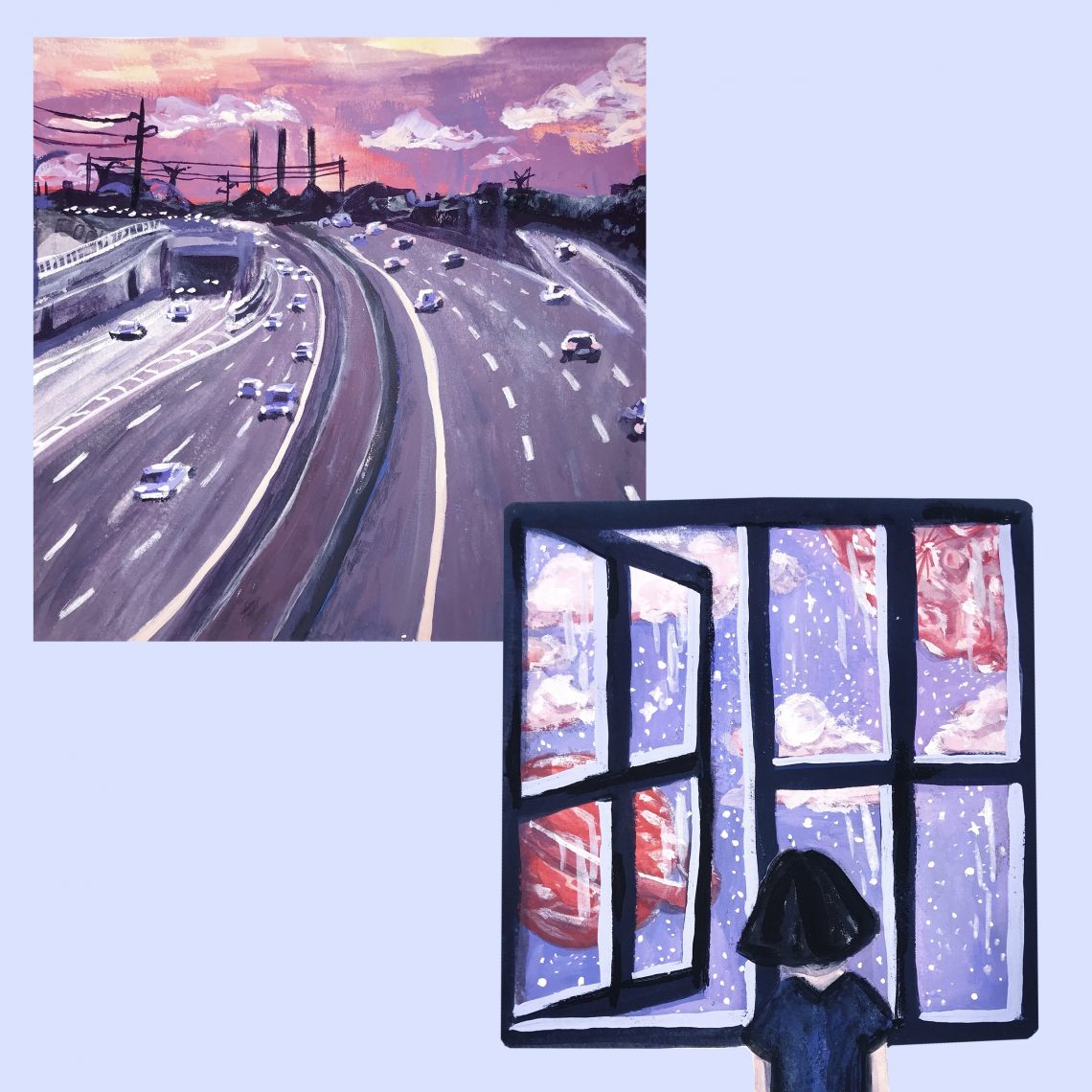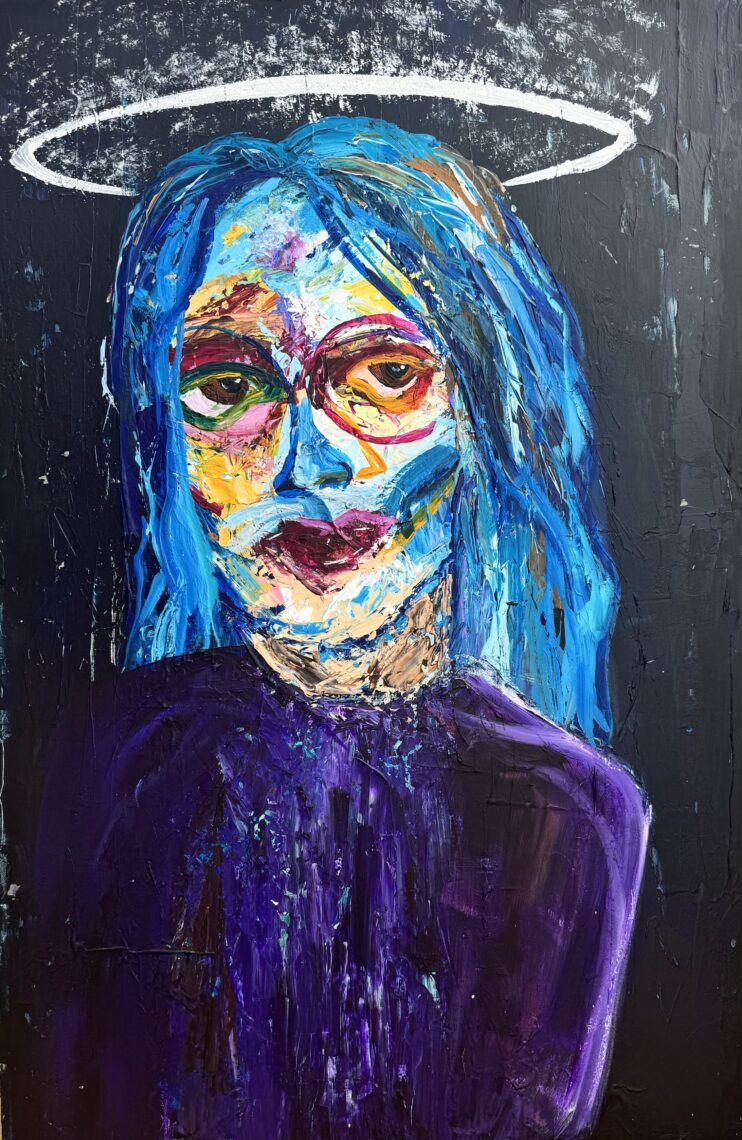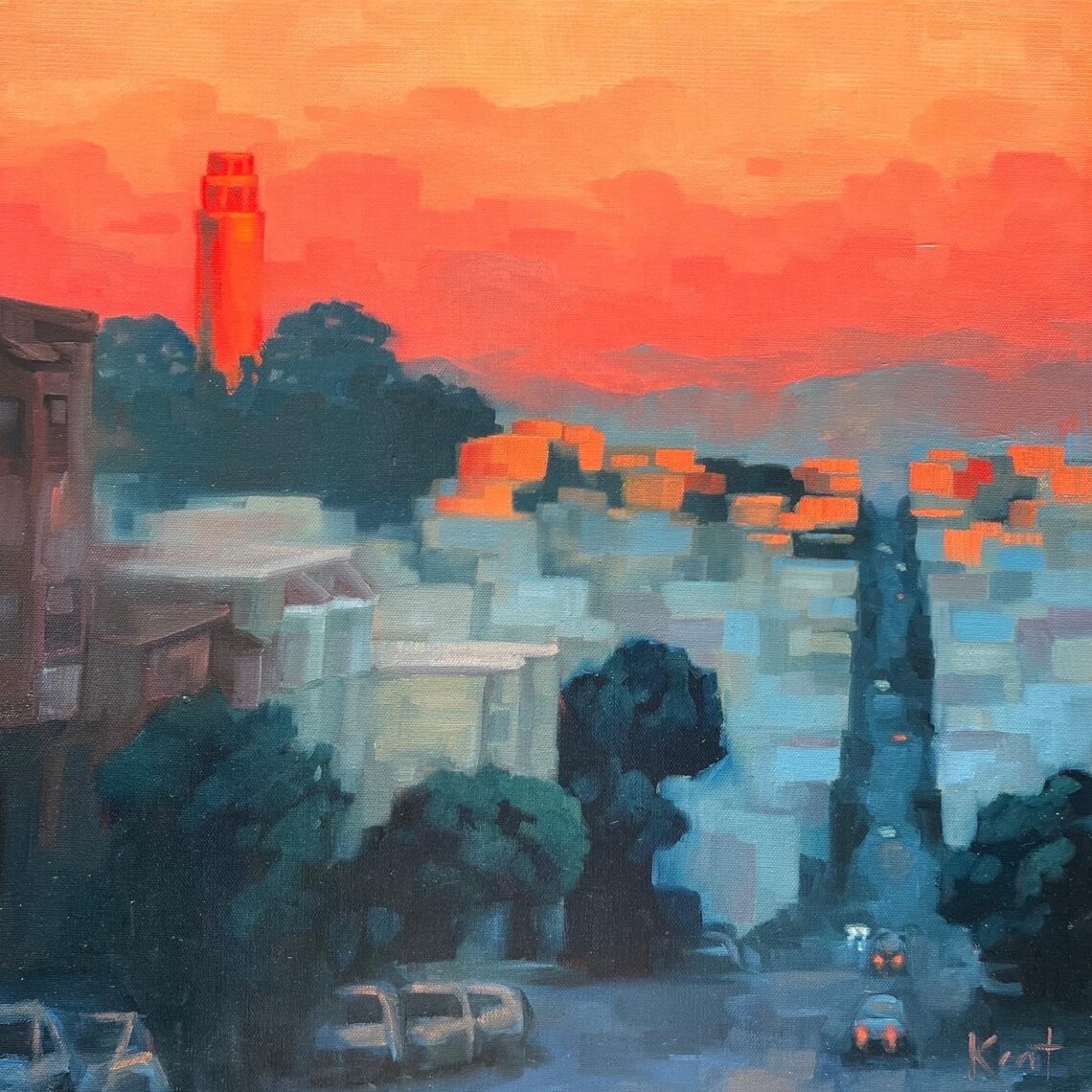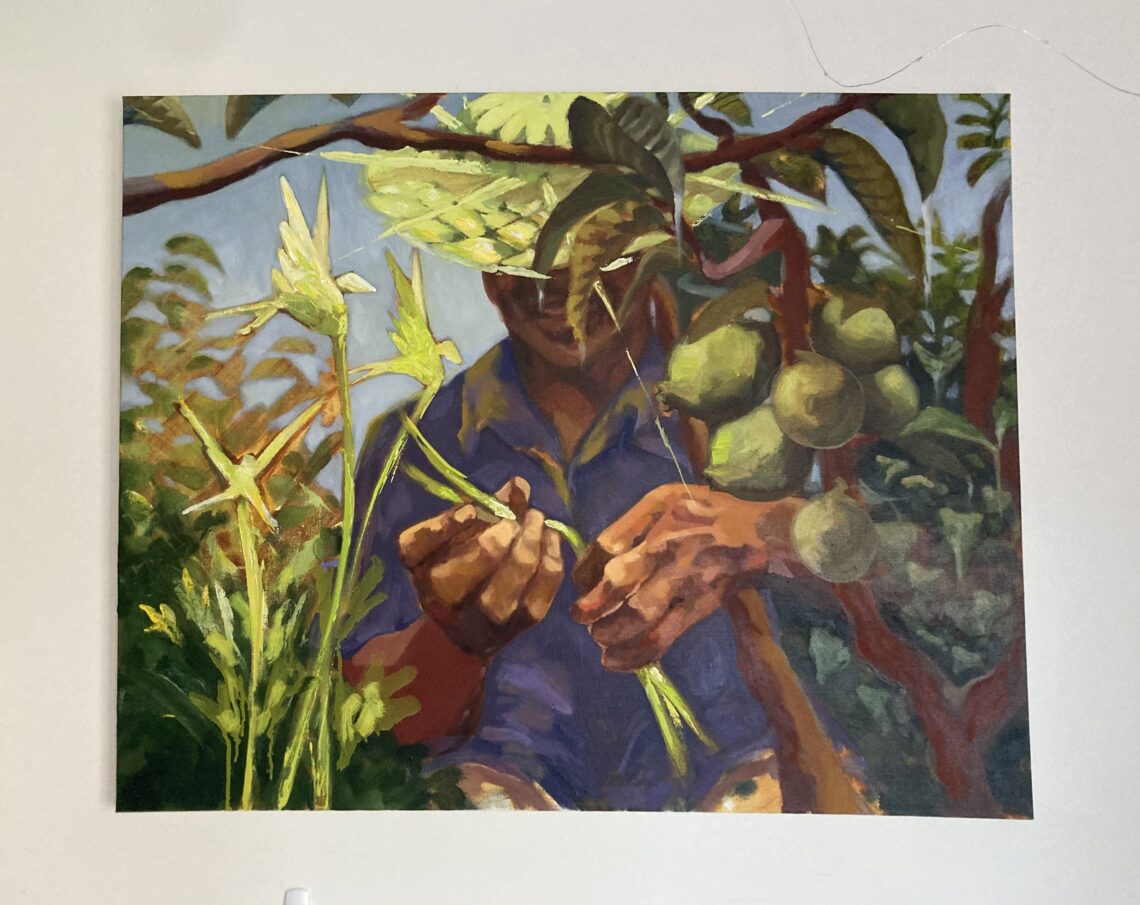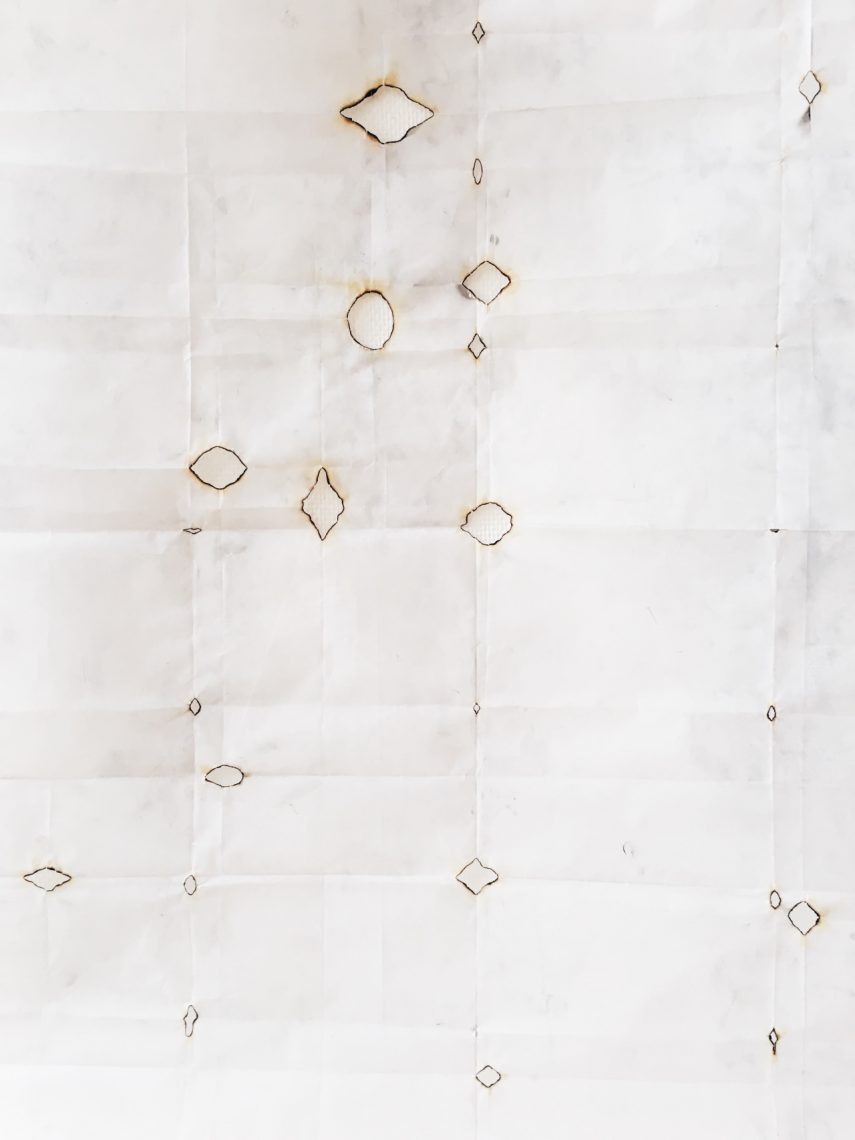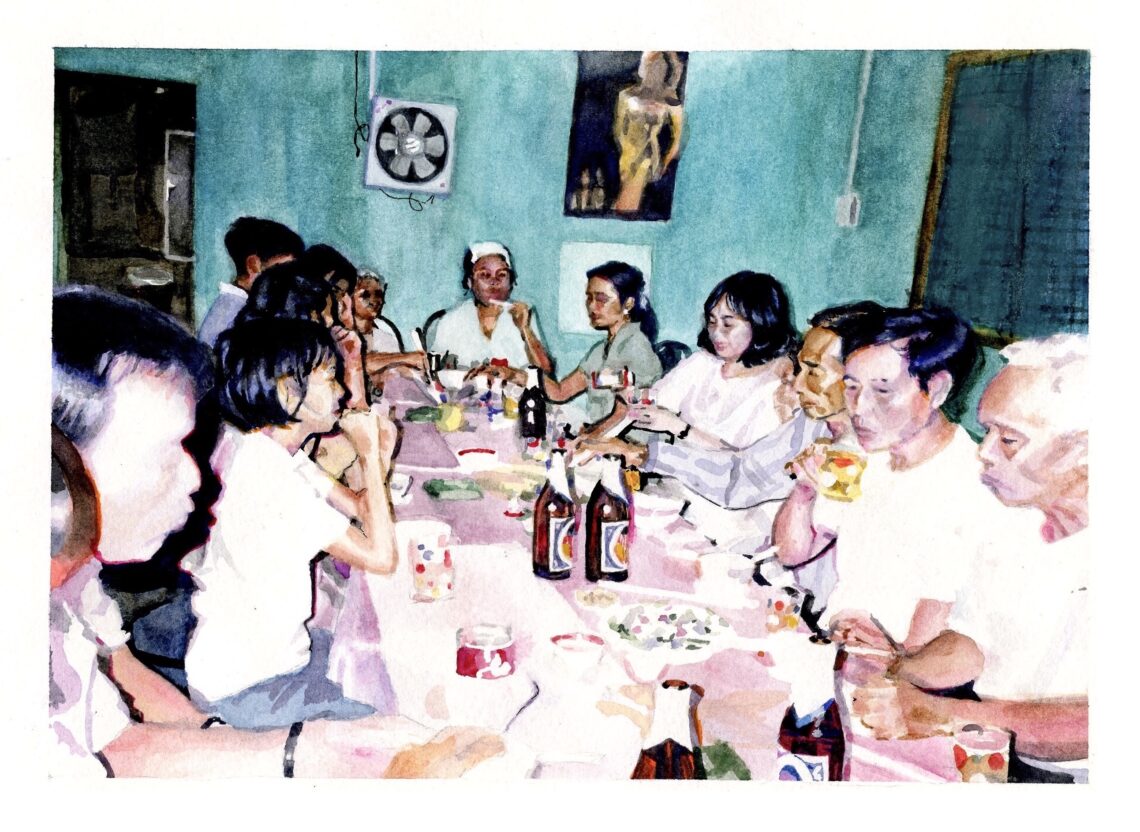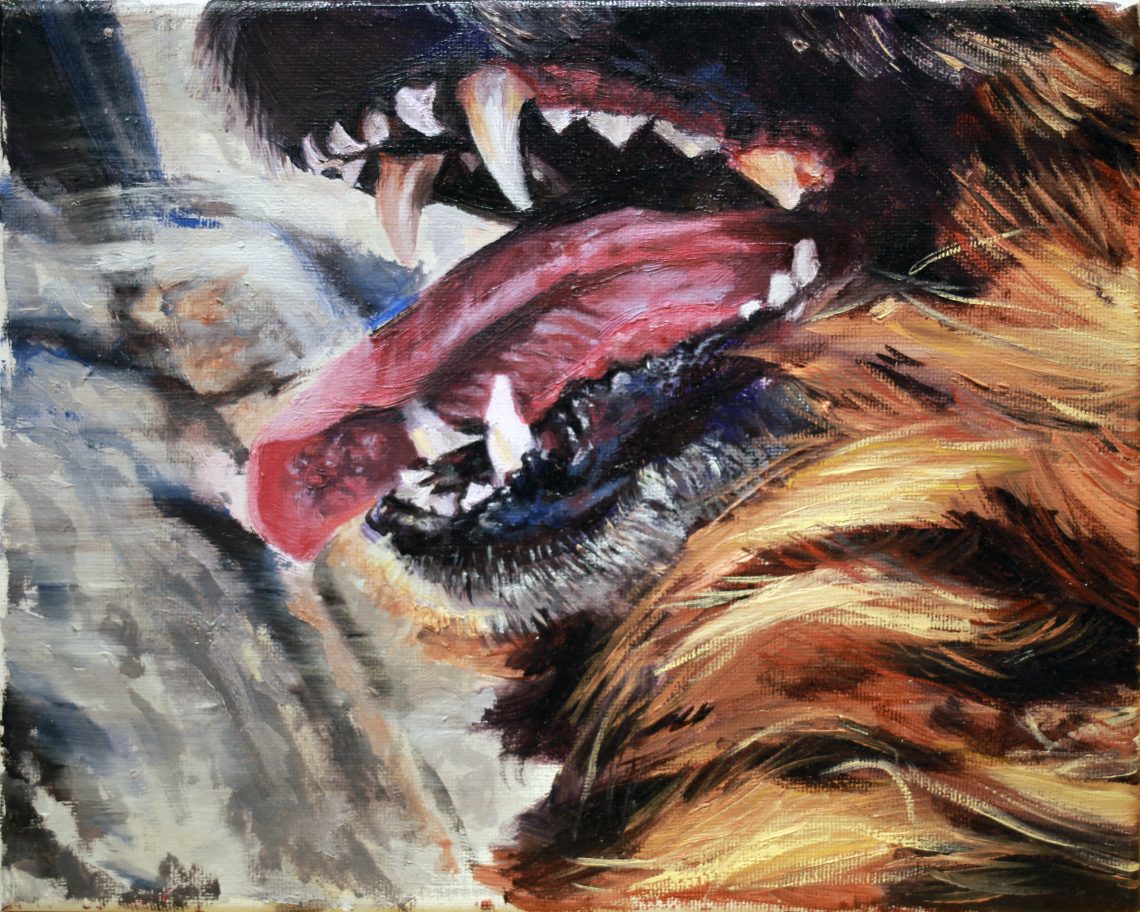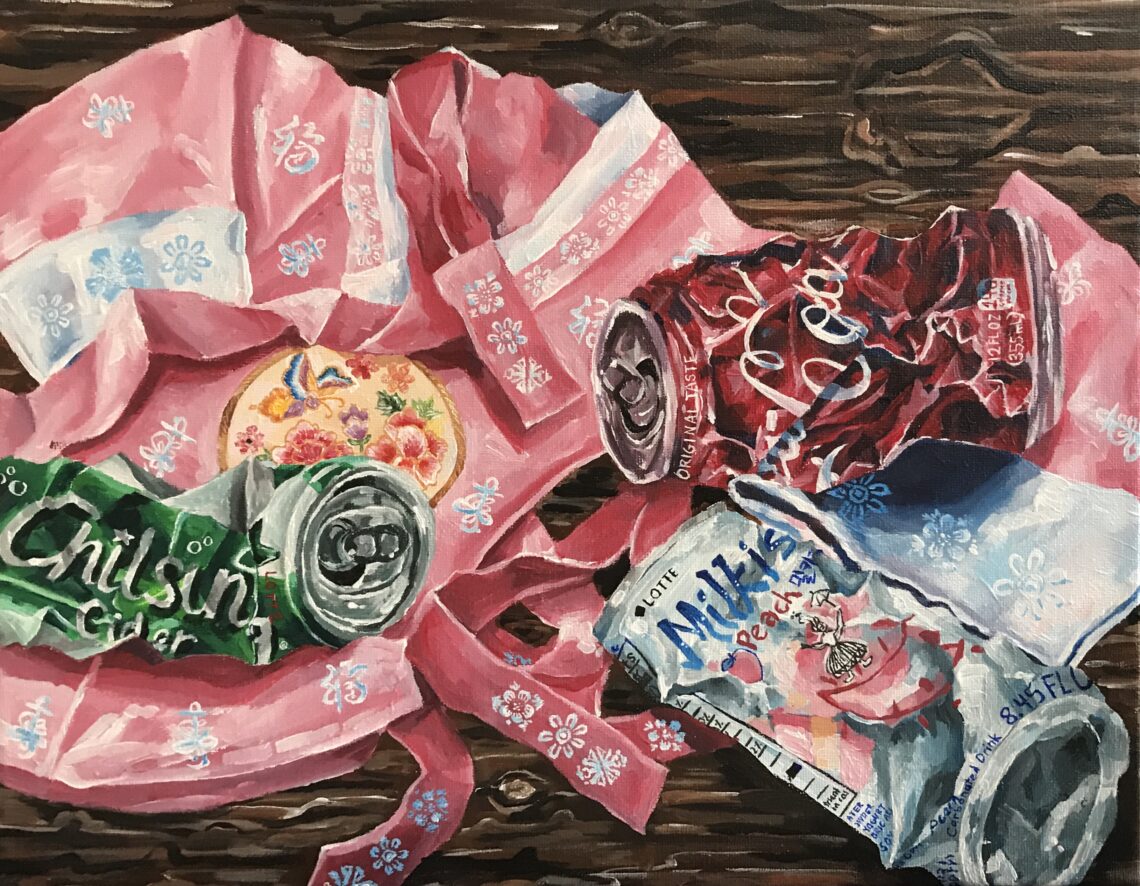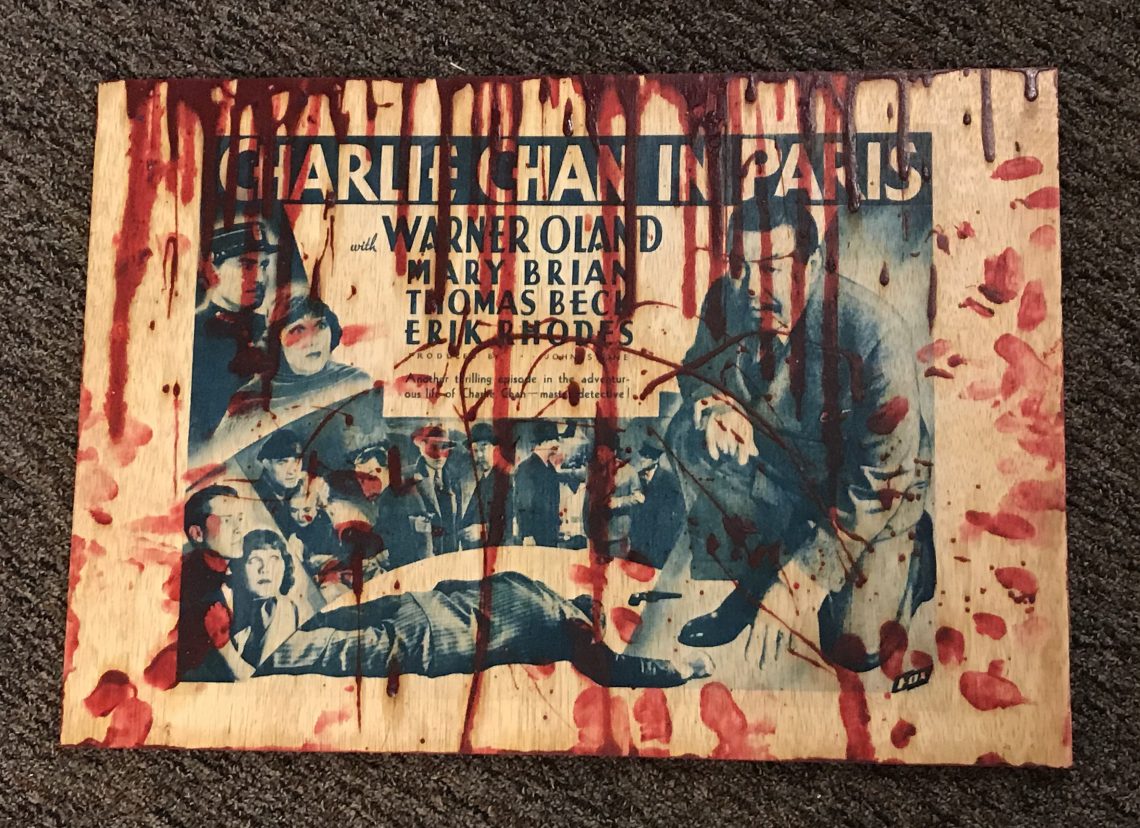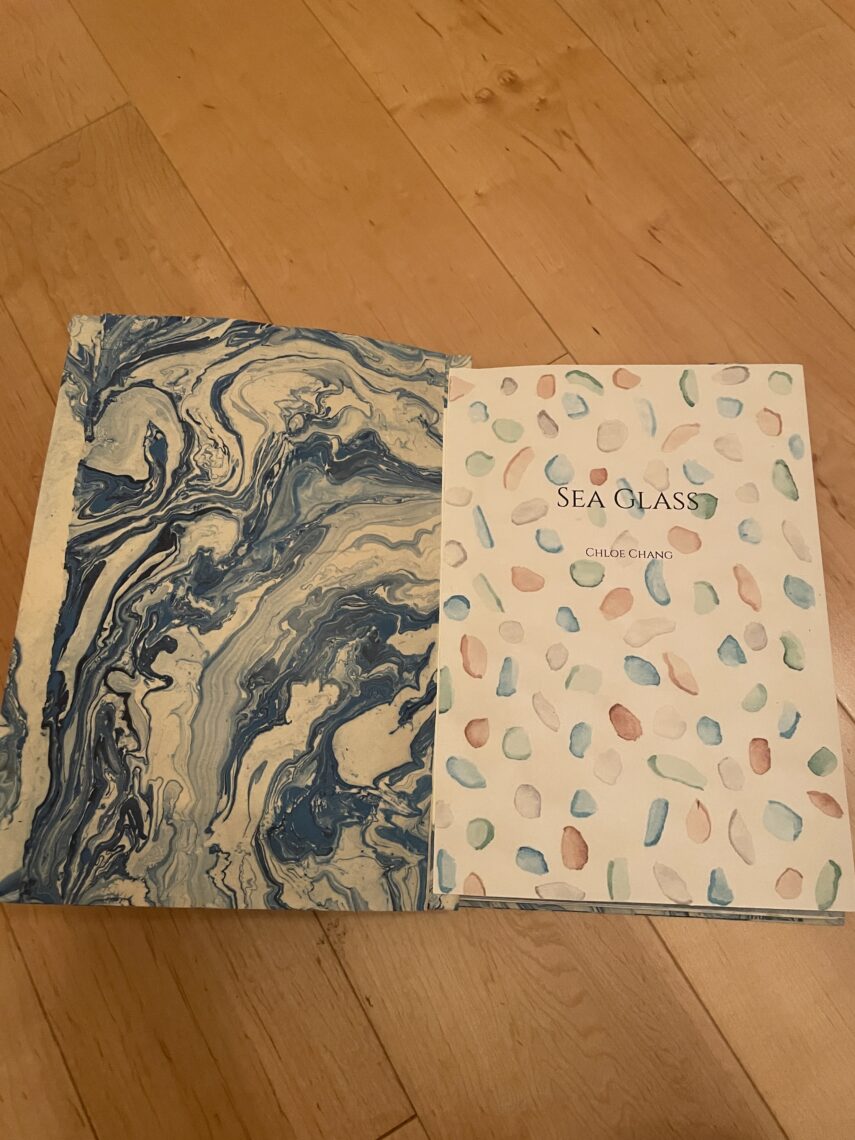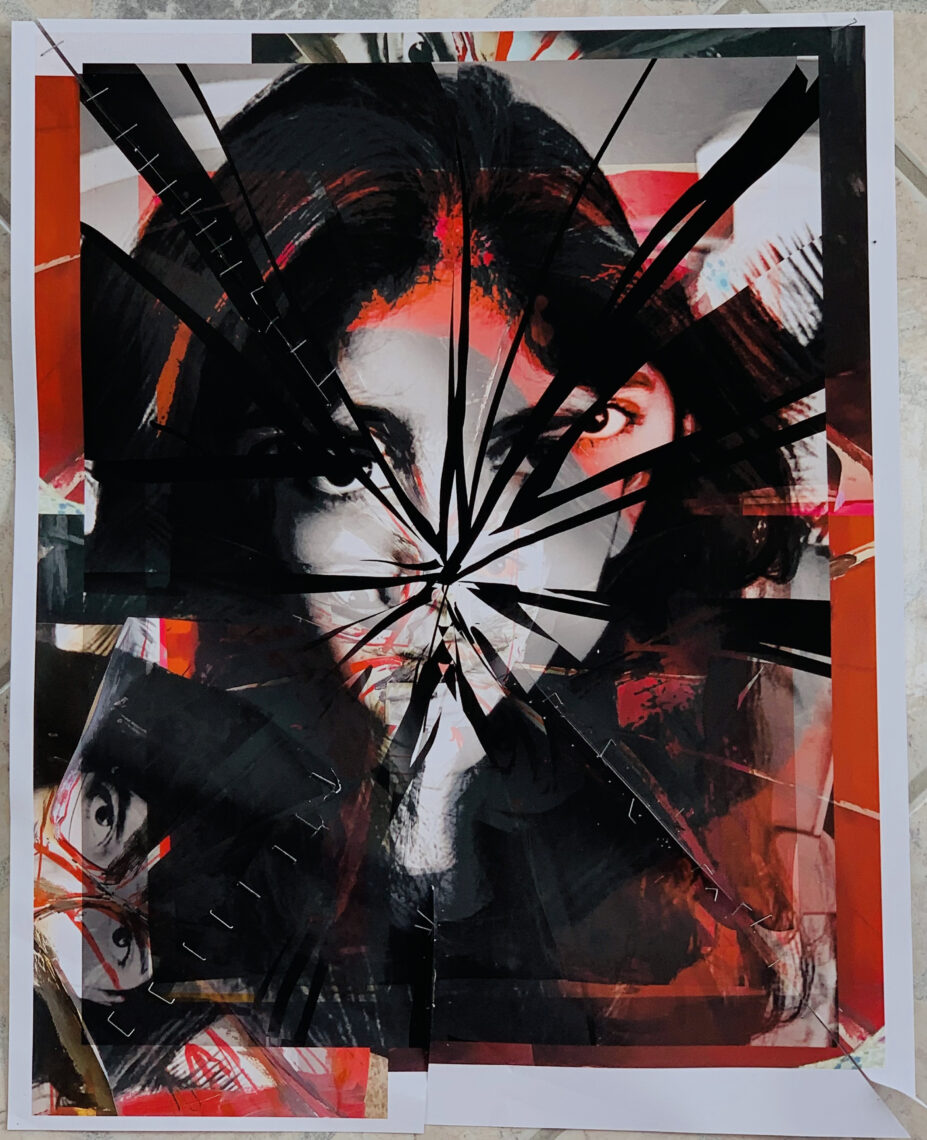-
Aleesa Alexander, assistant curator of American art at the Cantor Arts Center and curator of the exhibition "The Medium Is the Message: Art since 1950." Photo by Shoey Sindel
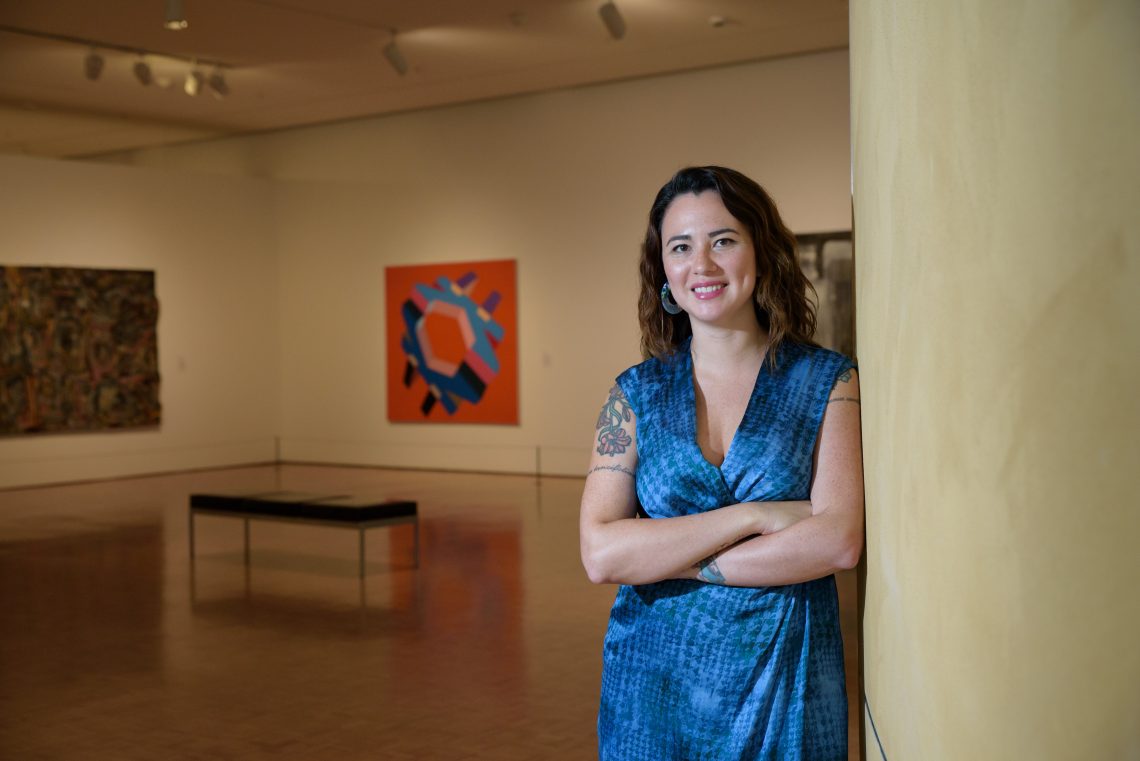
-
Aleesa Alexander, assistant curator of American art, with Susan Dackerman, John and Jill Freidenrich Director of the Cantor Arts Center, in the exhibition "The Medium Is the Message: Art since 1950." Photo by Shoey Sindel

-
Willie Cole (U.S.A., b. 1955), "Household Find," 1990. Ironing board, tin, wood, and Plexiglas. Modern and Contemporary Art Fund, 1996.28
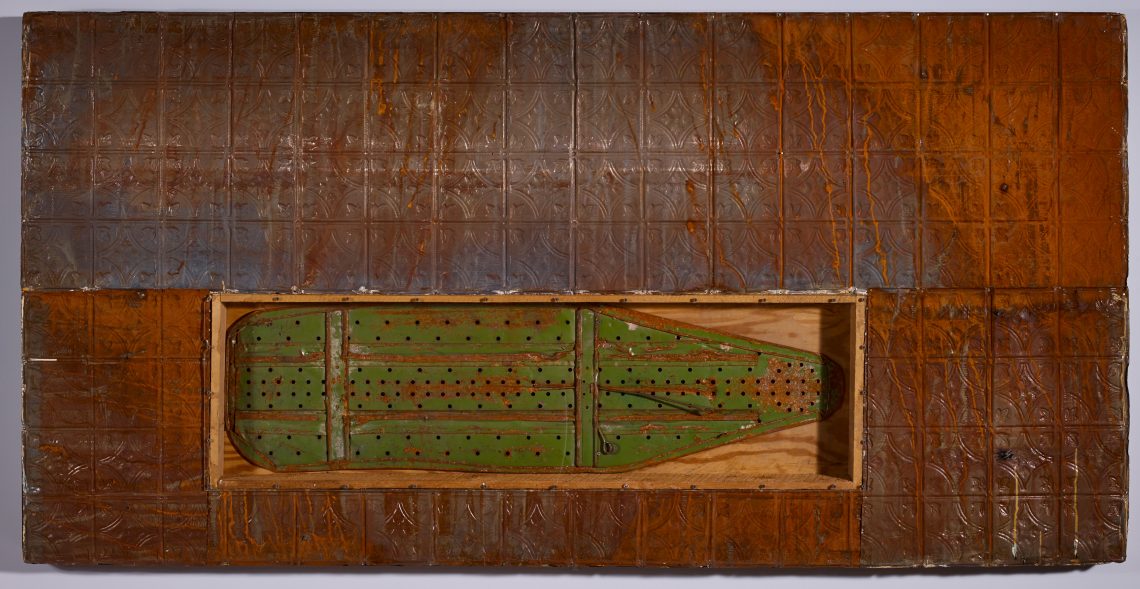
-
Edward Kienholz and Nancy Reddin Kienholz (Edward Kienholz: U.S.A., 1927–1994; Nancy Kienholz: U.S.A., 1943-2019), "The Billionaire Deluxe," 1977. Metal, Fresnel lens system, light bulb, and solid-state electronic second counter. Gift of the Marmor Foundation (Drs. Michael and Jane Marmor) from the collection of Drs. Judd and Katherine Marmor, 2007.57
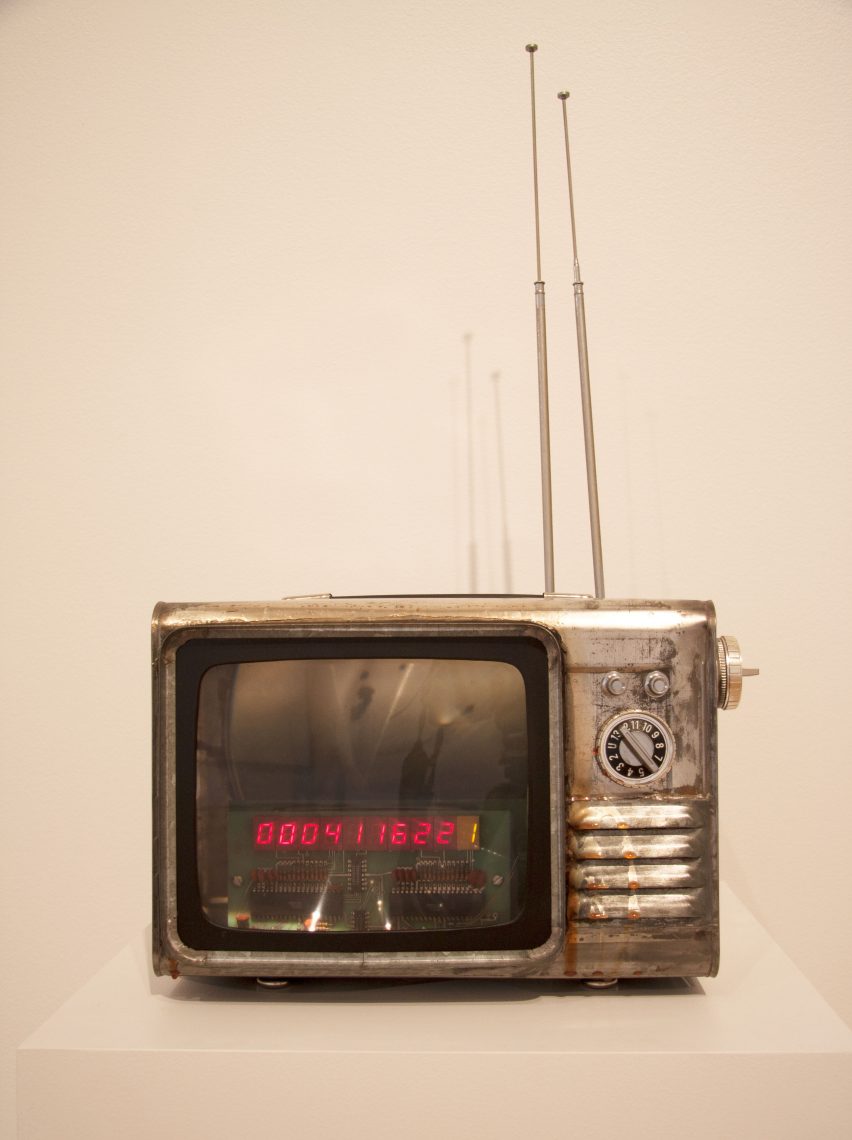
-
Raymond Jennings Saunders (U.S.A., b. 1934), "Once Upon a Time," 2003. Mixed media on board. Museum purchase in honor of the Contemporary Collectors Circle 25th Anniversary, 2010.26
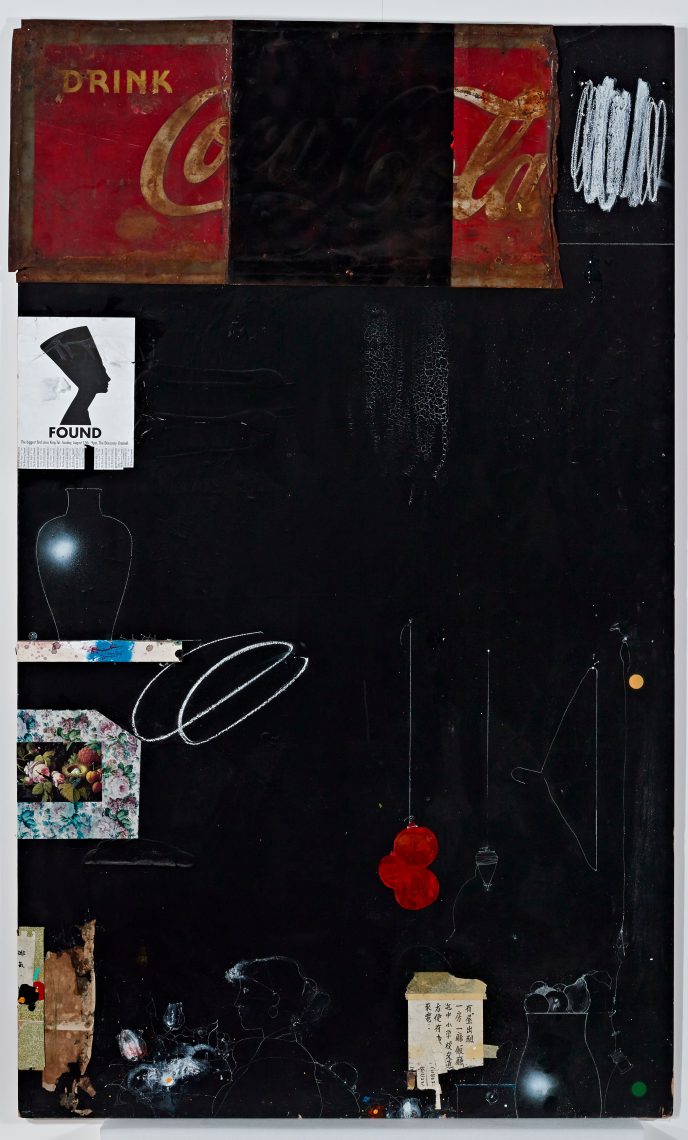
-
Roger Shimomura (U.S.A., b. 1939), "Lush Life #2," 2008. Acrylic on canvas. Gift of Marilynn and Carl Thoma, 2010.97
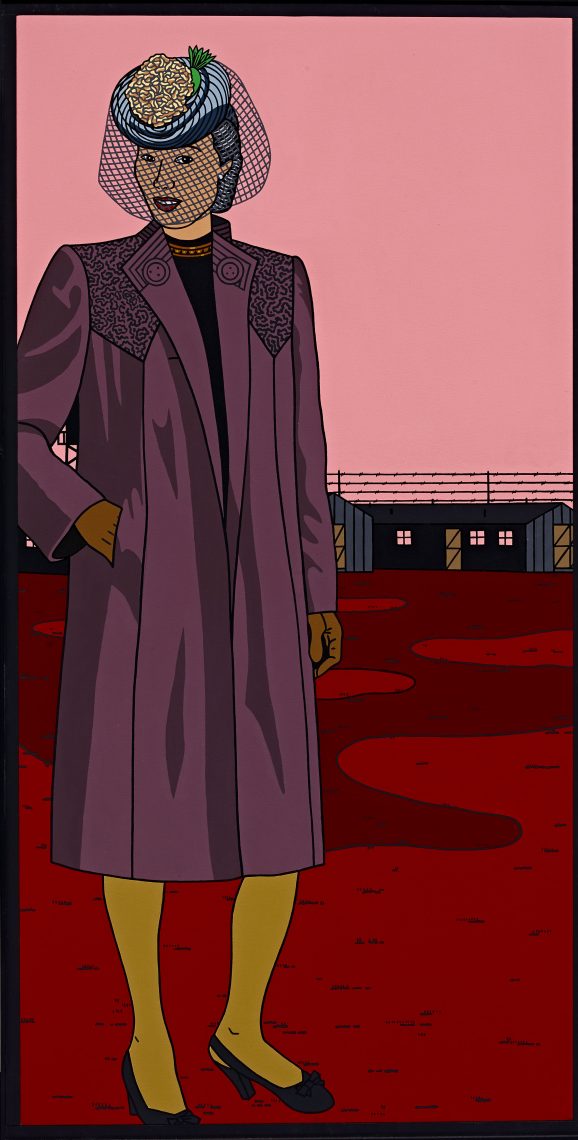
-
Ruth Asawa (U.S.A., 1926–2013), "Untitled," c. 1962. Copper or bronze wire. Gift of Carol and Dexter Hake, 2014.110
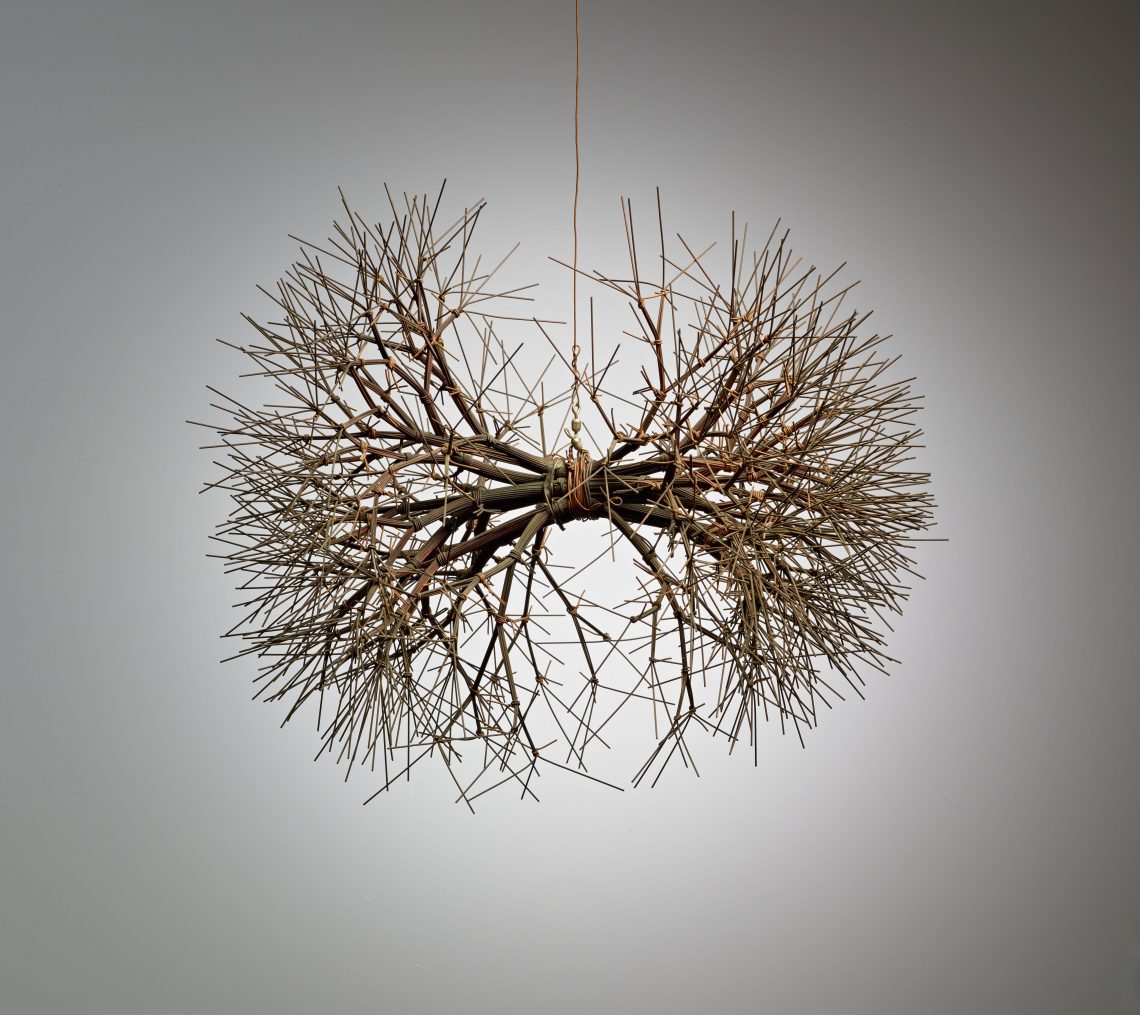
-
Titus Kaphar (U.S.A., b. 1976), "Page 4 of Jefferson's "Farm Book,".... Page 4 of Jefferson's "Farm Book," January 1774, Goliath, Hercules, Jupiter, Gill, Fanny, Ned, Sucky, Frankey, Gill, Nell, Bella, Charles, Jenny, Betty, June, Toby, Duna (sic), Cate, Hannah, Rachael, George, Ursula, George, Bagwell, Archy, Frank, Bett, Scilla, ? , 2, 2018. Oil on canvas on support panel. © Titus Kaphar. Palmer Gross Ducommun Fund, 2018.102
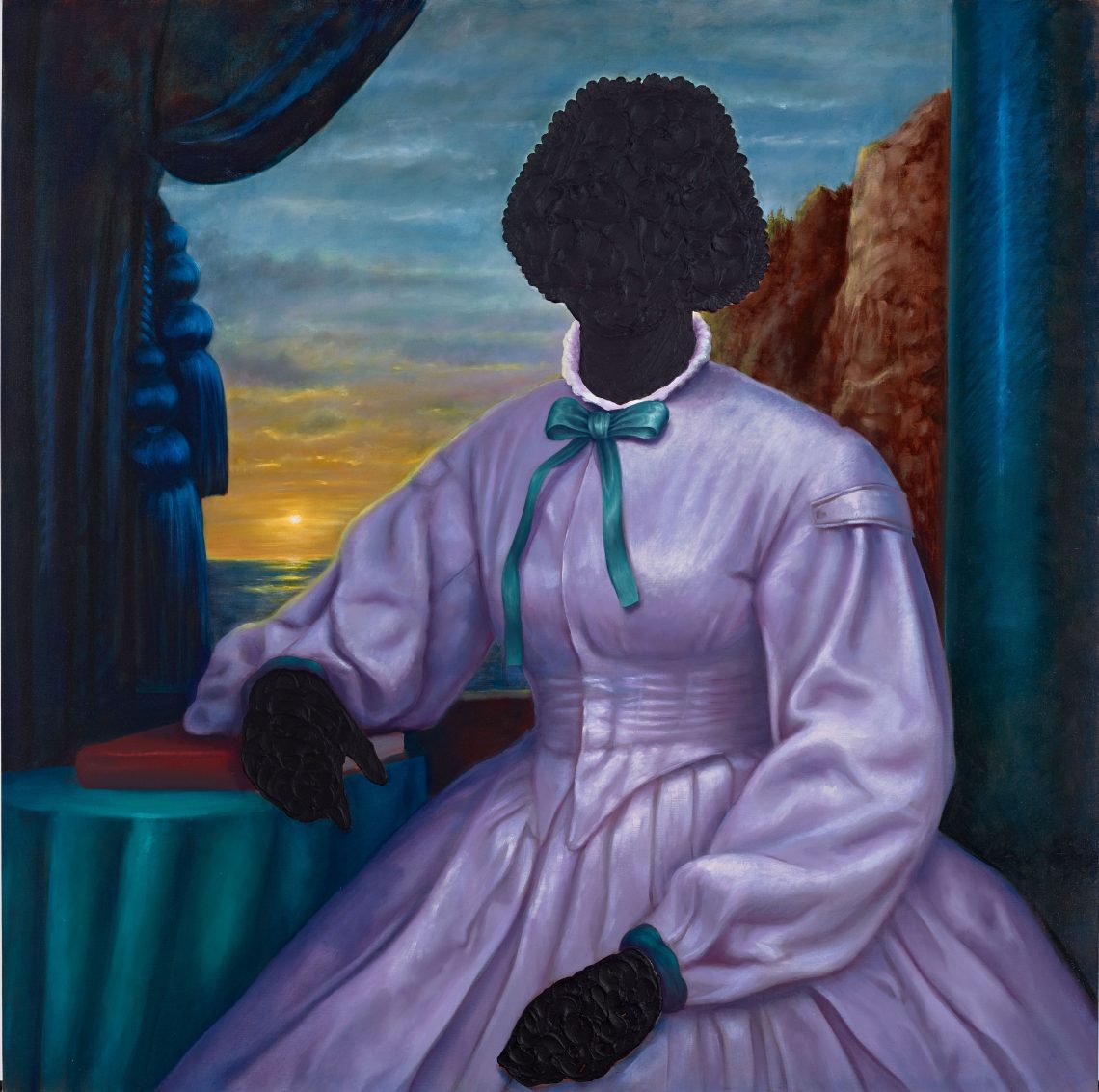
-
Lonnie Holley (U.S.A., b. 1950), "The Waters of Then and Now," 2018. Collage on museum board with spray paint. Courtesy of the artist and Paulson Fontaine Press
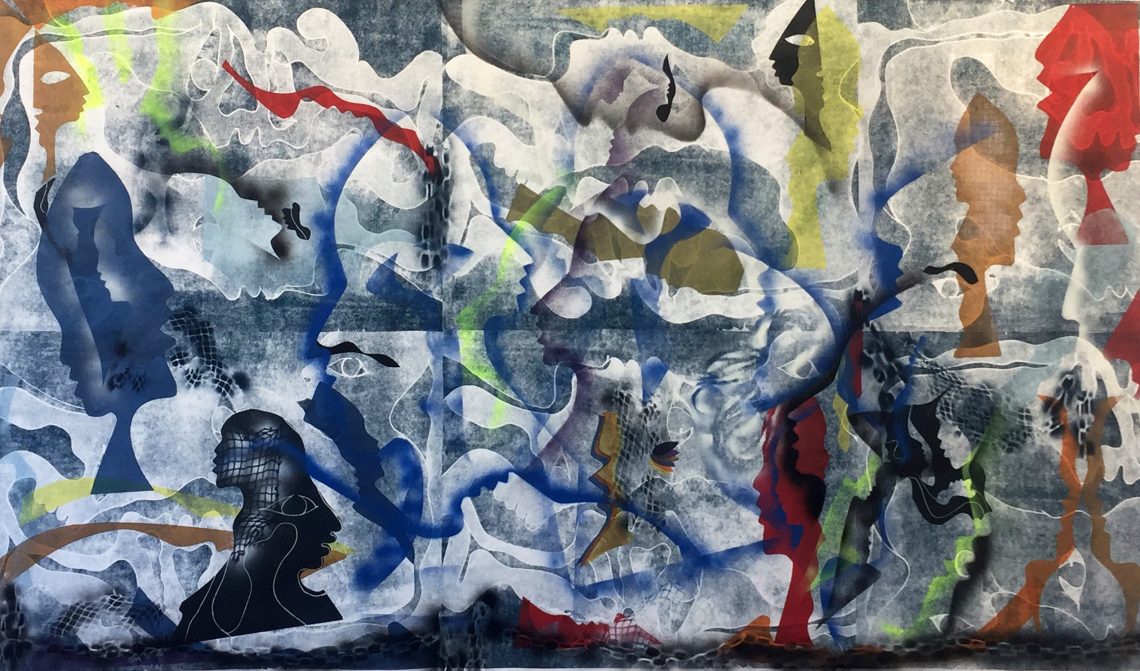
The Medium Is the Message: Art since 1950
On view at the Cantor Arts Center in the Pigott Family Gallery
“It is the medium that shapes and controls the scale and form of human association and action,”
wrote Marshall McLuhan.
Using works created since 1950, this reinstallation of the Cantor’s permanent collection of contemporary art explores the relationship between subject, content, and the materials that informed each object’s production. In 1964, Canadian media theorist Marshall McLuhan argued that the way information is transmitted is as important as the content being conveyed, or, “the medium is the message.” The term medium can refer to a means of communication, the materials from which an art object is created, or a mediating apparatus between objects and subjects.
Using McLuhan’s ideas as a starting point, this exhibition is divided into three categories: “In the Abstract” explores how paint, metal, and fabric can be used as means of abstract communication and asks questions about how abstraction has highlighted and obscured particular narratives in the history of art. “The Sum of Its Parts” looks at how artists have used nontraditional art materials and examines what the forgotten objects of yesterday tell us about the present. “The Faces We Present” considers the limits of figural representation, investigating whether portraiture can function as a medium to address historical inequities and visual disenfranchisement.
“With this exhibition, I wanted to tell a story that highlights the strengths of our collection, while also addressing pressing contemporary issues of interest,” said Aleesa Alexander, assistant curator of American art. “I also wanted to bring in some exciting loans to enliven our collection and feature artists like Lonnie Holley and Thornton Dial, whose work has never been shown before at the Cantor. Above all, I aimed to tell as diverse a story as possible. I always endeavor to feature work by artists who are underrepresented in the canon, thereby introducing visitors to objects they have likely never seen before.”
Viewed collectively, the works in the exhibition suggest that an exploration of medium is one way of challenging dominant discourses around art, culture, and history.
This exhibition is organized by the Cantor Arts Center. The Cantor gratefully acknowledges support from The Clumeck Endowment Fund.








